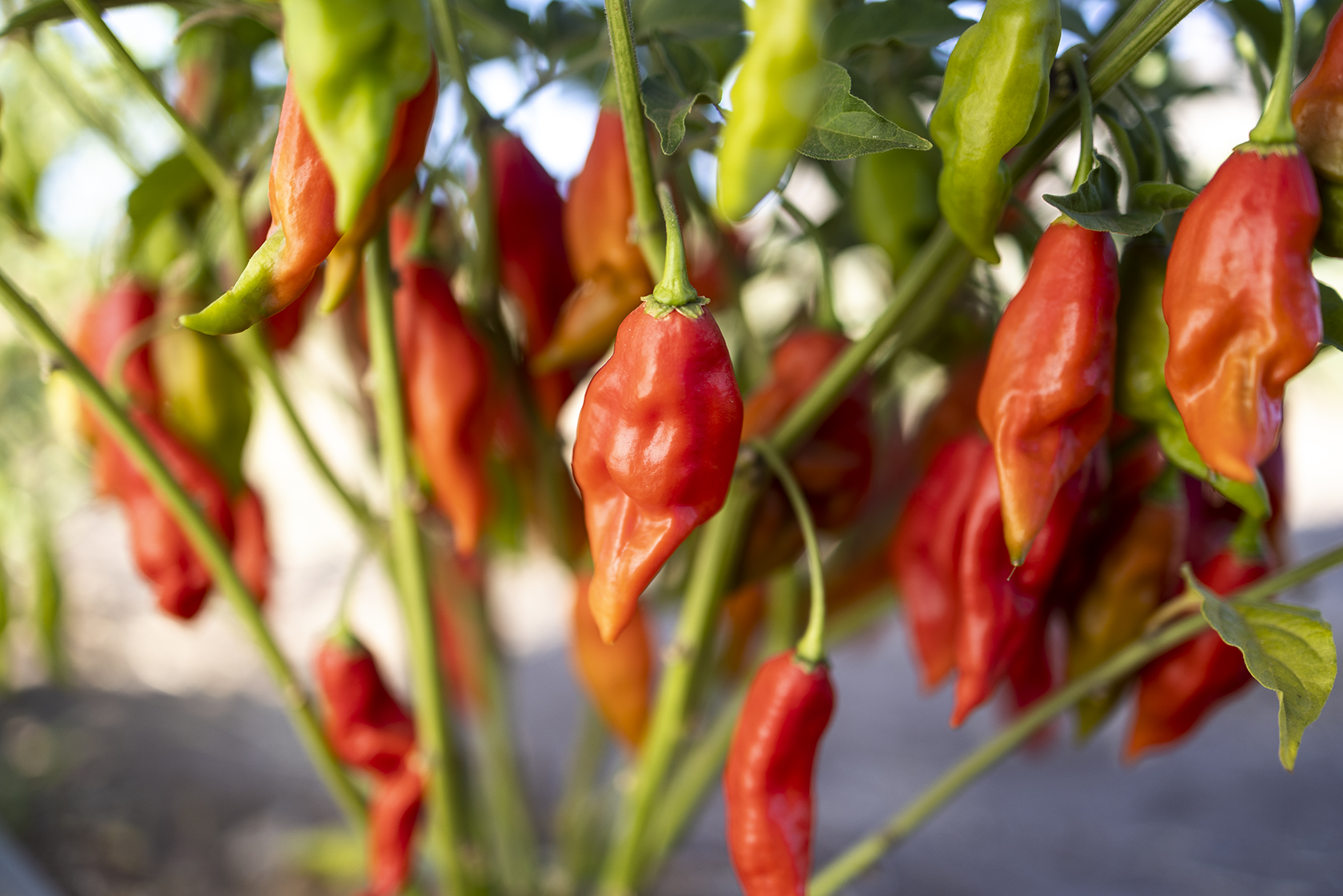Chilies, Healthy Guts, and Antioxidants

Chilies are the smallest members of the capsicum family, which includes sweet peppers and spicy chilies. Peppers and chilies are a versatile bunch. They can be pickled, roasted, sautéed, blackened, and pureed into myriad dishes. Peppers get their characteristic flavor from the compound capsaicin. Peppers with less capsaicin are mild. As the concentration of capsaicin increases, so does the characteristic heat or spiciness of the chilies. The more capsaicin, the greater the health benefits.
Capsicums have been found to have many positive effects on human health, including improved cardiovascular function, glucose regulation, pain relief, and even reduced inflammation. In a large study in Italy, researchers found that regular chili consumers (chili consumption four or more times a week), had a 23% lower risk of mortality from all causes compared to those who rarely or never consumed chilies. Regular chili consumers had a 14-50% reduction in cardiovascular mortality.
Chilies may also help humans shed unwanted pounds. By increasing our ability to utilize insulin, chilies may help lower blood sugar and improve metabolism. Researchers believe much of the health benefit is due to capsaicin, which can even positively affect our gut health. By promoting the growth of healthy gut bacteria while preventing the development of bad gut bacteria, capsaicin can help maintain a healthy microbiome and support immune health.
Capsaicin can be used in other ways, too. Capsaicin can be applied topically to relieve nerve pain when compounded into a cream. It is effective for post-herpetic nerve pain, HIV neuropathy, and diabetic peripheral neuropathy. While the evidence is moderate, those who got pain relief from capsaicin reported better sleep, less fatigue, less depression, and improved quality of life.
Chilies also contain many antioxidants. Powerful carotenoids like beta carotene, and the flavonoids, quercetin and luteolin, are found throughout the capsicum family. These antioxidants have health benefits of their own and may have a synergy with capsaicin to create even more significant health benefits.
If spicy chilies aren’t your thing, don’t despair. You can get capsaicin in mild or sweet peppers, which have many of the same nutrients as chilies. While capsaicin is not as concentrated, when eaten frequently, the small amounts of capsaicin in milder peppers may provide significant benefits.
 Registered Dietician Linda Illingworth is the founder of Nutrition Muse and current Director of Nutrition at Lifewellness Institute in Point Loma, CA. She is responsible for patient clinical care and corporate wellness education for local and international corporations. Using the premise that ‘every molecule in your body is sourced from food’, she focuses on food as the foundation for health. She supports her clients through lifestyle changes to make the most impact on health. As a certified specialist in Sports Nutrition, Linda also has specialized training in food sensitivities, supplementation, wellness, thyroid, and cardiovascular nutrition.
Registered Dietician Linda Illingworth is the founder of Nutrition Muse and current Director of Nutrition at Lifewellness Institute in Point Loma, CA. She is responsible for patient clinical care and corporate wellness education for local and international corporations. Using the premise that ‘every molecule in your body is sourced from food’, she focuses on food as the foundation for health. She supports her clients through lifestyle changes to make the most impact on health. As a certified specialist in Sports Nutrition, Linda also has specialized training in food sensitivities, supplementation, wellness, thyroid, and cardiovascular nutrition.
References:
- Bonaccio M, Di Castelnuovo A, Costanzo S, et al. Chili Pepper Consumption and Mortality in Italian Adults. J Am Coll Cardiol. 2019;74(25):3139-3149.
- Derry S, Rice AS, Cole P, Tan T, Moore RA. Topical capsaicin (high concentration) for chronic neuropathic pain in adults. Cochrane Database Syst Rev. 2017;1(1):CD007393. Published 2017 Jan 13.



